America has plowed, developed and otherwise destroyed or degraded vast expanses of native prairie. For generations prairies were seen as deficient in their lack of trees and dangerous in their flammability. On moving from Michigan to Nebraska J. Sterling Morton was so distressed by the paucity of trees that in 1870 he called forth “a grand army of husbandmen … to battle against the timberless prairies.” Two years later he founded Arbor Day.
At least we’re no longer anti-prairie. But Chris Helzer, The Nature Conservancy’s science director for Nebraska, offers this: “People just don’t think about prairies as natural areas. They tend to think about forests and rivers and mountains, especially when they’re looking for recreational opportunities. Getting people to recognize prairies as attractive, interesting and valuable is a big challenge.”
Neil Shook manages the Chase Lake National Wildlife Refuge in central North Dakota. Part of his job is educating people about where trees don’t belong. He’s learned to talk first and cut later. Shortly he’ll be holding public meetings to explain why the refuge needs to lose a stand of beloved, highly invasive caragana native to Siberia.
Environmentalists visiting this refuge and other prairie preserves are often appalled to encounter cattle. But prairie vegetation evolved with grazing. Bison, elk, prairie dogs and a host of other herbivores consumed forage, creating diversity of vegetation to which other species adapted. When Shook took me to a section cowless for half a century we encountered spongy duff rank with weeds. But on grazed sections we found firm, rich soil pushing prairie natives. The only thing wrong with cattle grazing is that it sometimes isn’t done right.
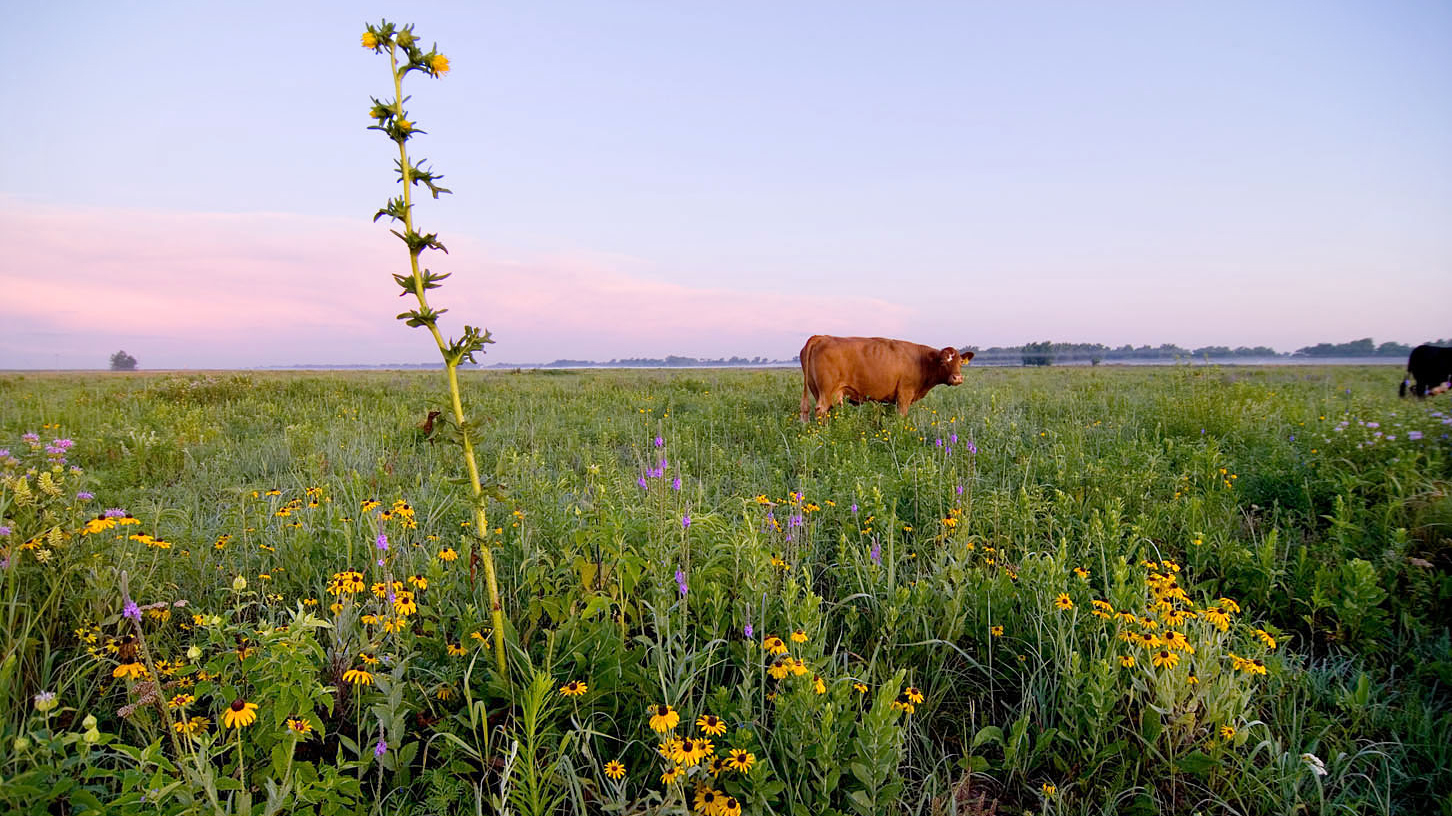
Farther east, where the public is less familiar with agricultural chemicals, some environmentalists are undone by herbicide use. But without herbicides the war to save native ecosystems can be lost. Consider the crested wheatgrass invading The Nature Conservancy’s Matador Ranch in Montana. The ranch protects some of the best remaining northern mixed-grass prairie. “Our bunch grasses are deep-rooted and pretty good at keeping out non-natives,” reports Brian Martin, the Conservancy’s state grasslands director. “But we have problems with crested wheatgrass. It outcompetes natives and is taller. Many herbicides aren’t selective, but they can be applied selectively. Next year we’ll test a roller to apply herbicide that will contact and kill the crested wheatgrass, but not the [lower] native plants.”
And this from Iowa prairie consultant Rich Patterson: “Herbicides are very helpful when you’re cutting exotic woody stuff. You just paint the stumps. Otherwise you’ve got these big root makers that come roaring back. Also, you can spray an established lawn with Roundup, then restore a prairie.”*
There’s a difference between prairie restoration and prairie recovery. With the former you start over with lawns, cow pastures, cornfields and the like. With the latter you work with prairie remnants.

“Native grasslands are highly resilient,” says Trey Davis, The Nature Conservancy’s director of stewardship in Wyoming. “They can sustain themselves under less-than-ideal management. That includes not just overgrazing but undergrazing and moderate grazing at the same time and duration every year. Once a grassland has been tilled, fragmented or developed, it can never be fully restored.”
So the Conservancy specializes in acquiring big prairie remnants. But even these big properties aren’t big enough. “We and other organizations can’t own and manage enough property to make enough of a difference,” says Davis. “We need to partner with private landowners who manage millions of acres.”
For example, the Matador Ranch manages 60,000 acres. But it devised a “grass bank” that improves an additional 300,000. Twenty ranchers get to fatten cattle on Matador grass at a discount, provided they implement prairie-healthy grazing plans on their own grasslands and agree not to convert them to crops. Grass-bank participants can raise more cattle because their home grass is healthier.

“A lot of grasslands we work on are in pretty good condition,” says Martin. “The reason we went there is that lots of rare species we’re interested in — grassland birds, for instance — were present in high numbers.”
The Matador gives an additional grazing discount to ranchers who don’t shoot or poison prairie dogs, a “keystone” species on which dozens of others depend. Now on ranch and grass bank there are enough prairie dogs to sustain their obligate predators, endangered black-footed ferrets; and Martin hopes to convince the feds to release some.
Where prairie landscapes have been destroyed by cultivation, restoration is often the only option; and the Conservancy is getting better at it. In Nebraska, for instance, it has restored 1,500 acres of former cropland on its Platte River Prairies.
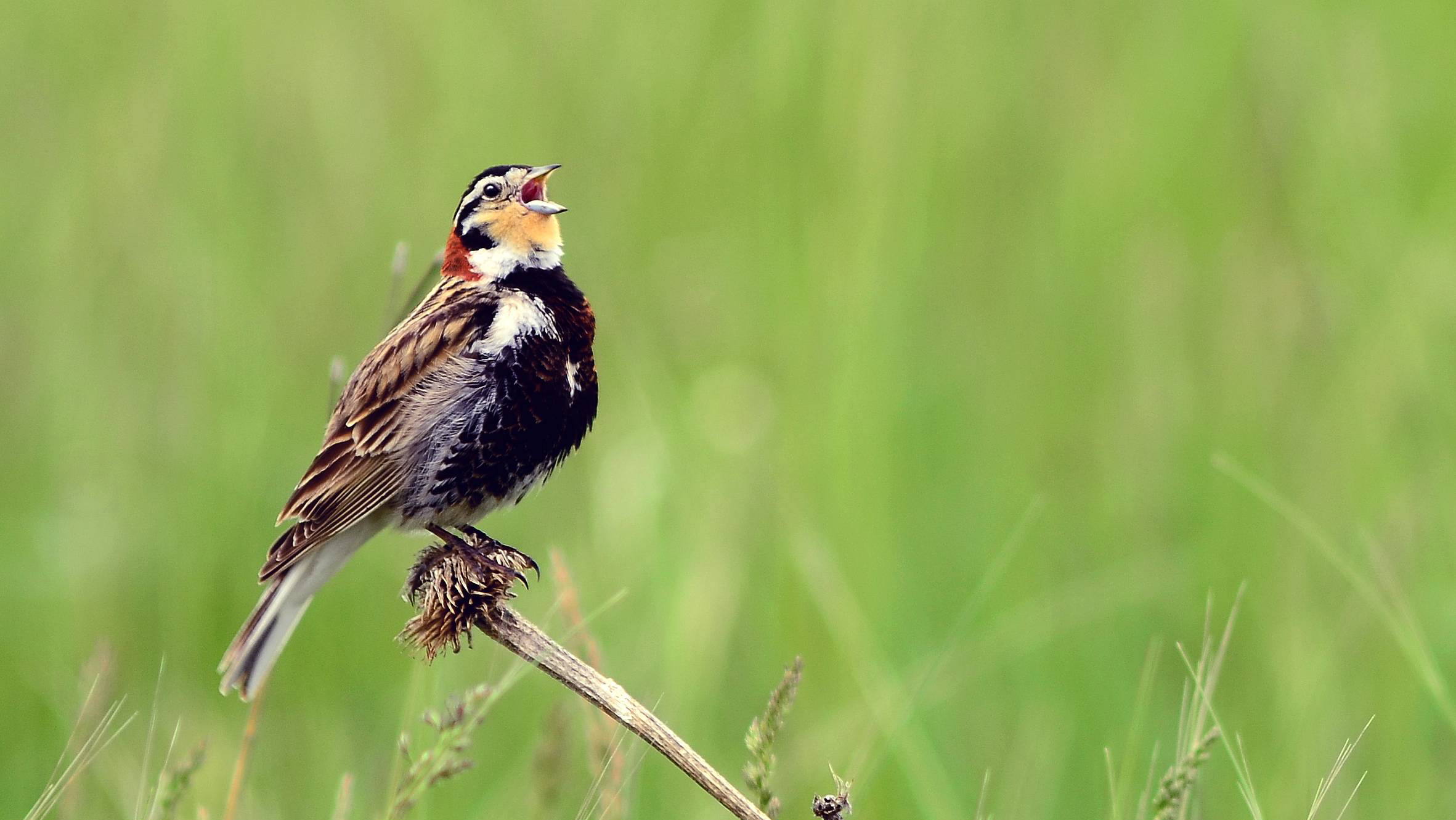
“We’ve been testing the idea that those restored prairies can help defragment the ecological landscape around them,” says Helzer. “We’re at the point where we can claim successes that we wouldn’t have claimed ten years ago. I’m pretty excited about it because we’ve learned how to make prairies larger and more connected. We can harvest seeds from a couple hundred species and get them to grow. We’ve looked at birds, bees, grasshoppers and small mammals, and we’ve got essentially the same species in restored prairies as on adjacent remnants.”
Where practical the Conservancy manages prairies with bison instead of cattle. Recently it has brought bison to preserves in Nebraska, Iowa, Illinois and Indiana. “We can get the same disturbance with cattle,” remarks Helzer. “But it’s really nice to use bison where we can. It says two things: One, that we’ve got grasslands on a scale that can support bison; and two, that we can help recover an iconic prairie species.”
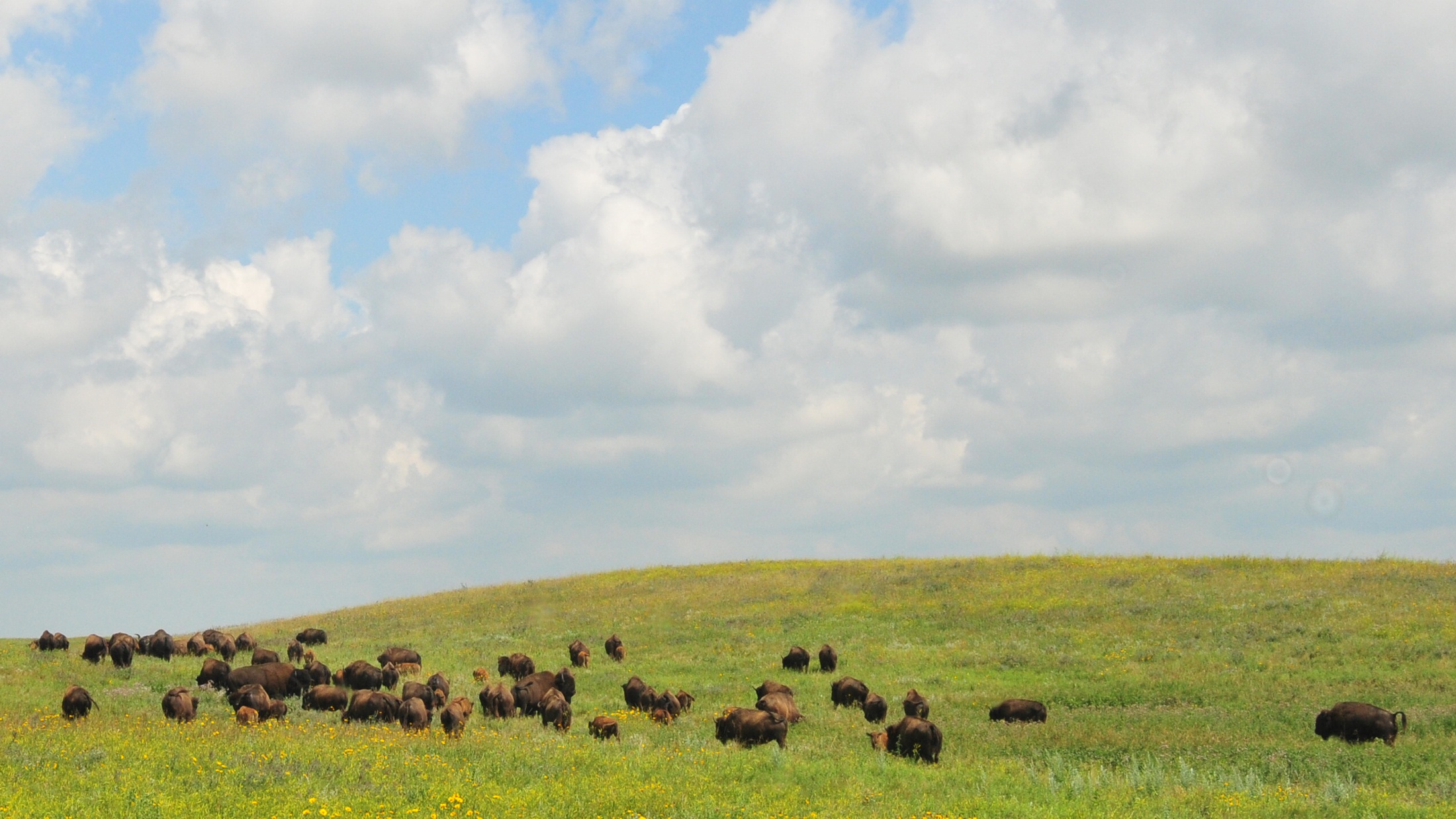
Prairies evolved with fire as well as grazers. On its Tallgrass Prairie Preserve in Oklahoma the Conservancy is using “patch-burn” prescribed fire in conjunction with 2,500 free-ranging bison. And it holds “patch-burn” workshops for ranchers who want to increase prairie health for wildlife and cattle.
Farther east, on small prairie restorations undertaken by local groups and individuals, fire permits and fire insurance are hard to get, and grazing is out of the question. These projects are too small and isolated to do much for vertebrate wildlife, but they’re important for creating prairie awareness. Much of this work is driven by public support for butterflies (especially monarchs) and bees. Pollinators need prairies and prairies need pollinators.
Insects are benefiting, and it’s great to save gasoline and get lawn chemicals out of watersheds. But the public tends to worry about the wrong bees — honey bees. They’re alien, domesticated, globally distributed. They’re not going extinct. We need to help the hundreds of imperiled native bee species that require big expanses of native wildflowers.
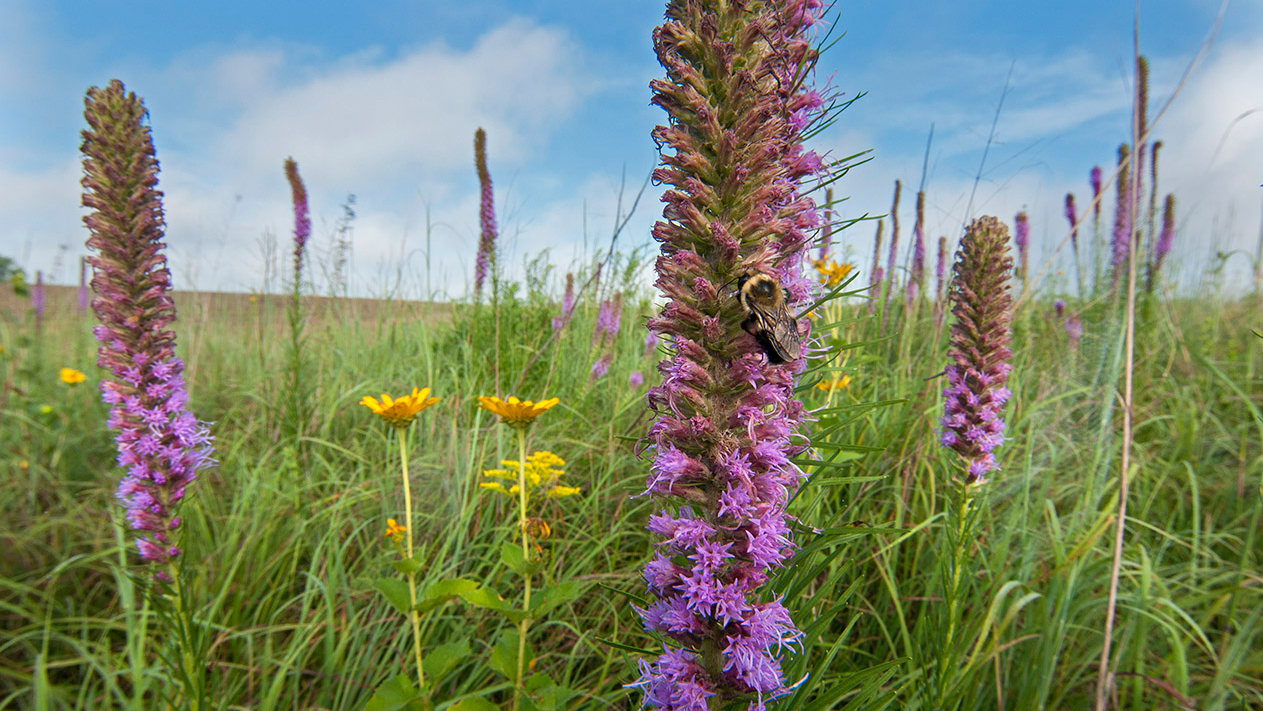
Encouraging as it is, this pollinator-plant craze has exhausted local seed supplies, so seeds are coming in from as far away as New Jersey. Some of the mixes are contaminated with aliens like palmer amaranth, a weed so doused with herbicides it has built resistance. Panicked Midwestern farmers are attacking it with flamethrowers.
Expansive tracts of prairie remain in the western high plains and Sandhills of Nebraska where The Nature Conservancy and partners are working at landscape-scale conservation. But with all the recovery and restoration it’s easy to forget we’re suffering net prairie loss, especially in the corn belt.
Thousands of acres of native grasslands have been converted to corn for federally mandated ethanol production. An insatiable market for American soybeans has opened in China. Federal crop-insurance payments, provided to farmers who can claim losses by tilling marginal land, encourage plowing of native prairie. The Conservation Reserve Program (CRP), which pays famers to remove environmentally sensitive land from production, has been capped at only 24 million acres. Low crop prices have created an unprecedented demand for CRP. But in South Dakota, with the cap almost maxed out, only two applicants were accepted during the last signup.

Delta Waterfowl’s John Devney looks on the bright side, noting that the unmet CRP demand has ignited “a political firestorm” inducing politicians, anti-environmentalists included, to demand a big CRP-cap increase in the 2018 Farm Bill.
As we lose prairies we gain appreciation for them and tools for their recovery and restoration. While I can’t shake the images of the muddy, bleeding carcasses of native grasslands I’ve slogged through on the Great Plains, I try to suppress them with brighter images.
None is more indelible than the view from a hill above Chase Lake as Neil Shook and I sat in fragrant, native grass, watching sharp-tailed grouse beat and glide, ducks wheel and dabble and horned larks and grasshopper sparrows buzz up from an endless expanse of prairie wildflowers.
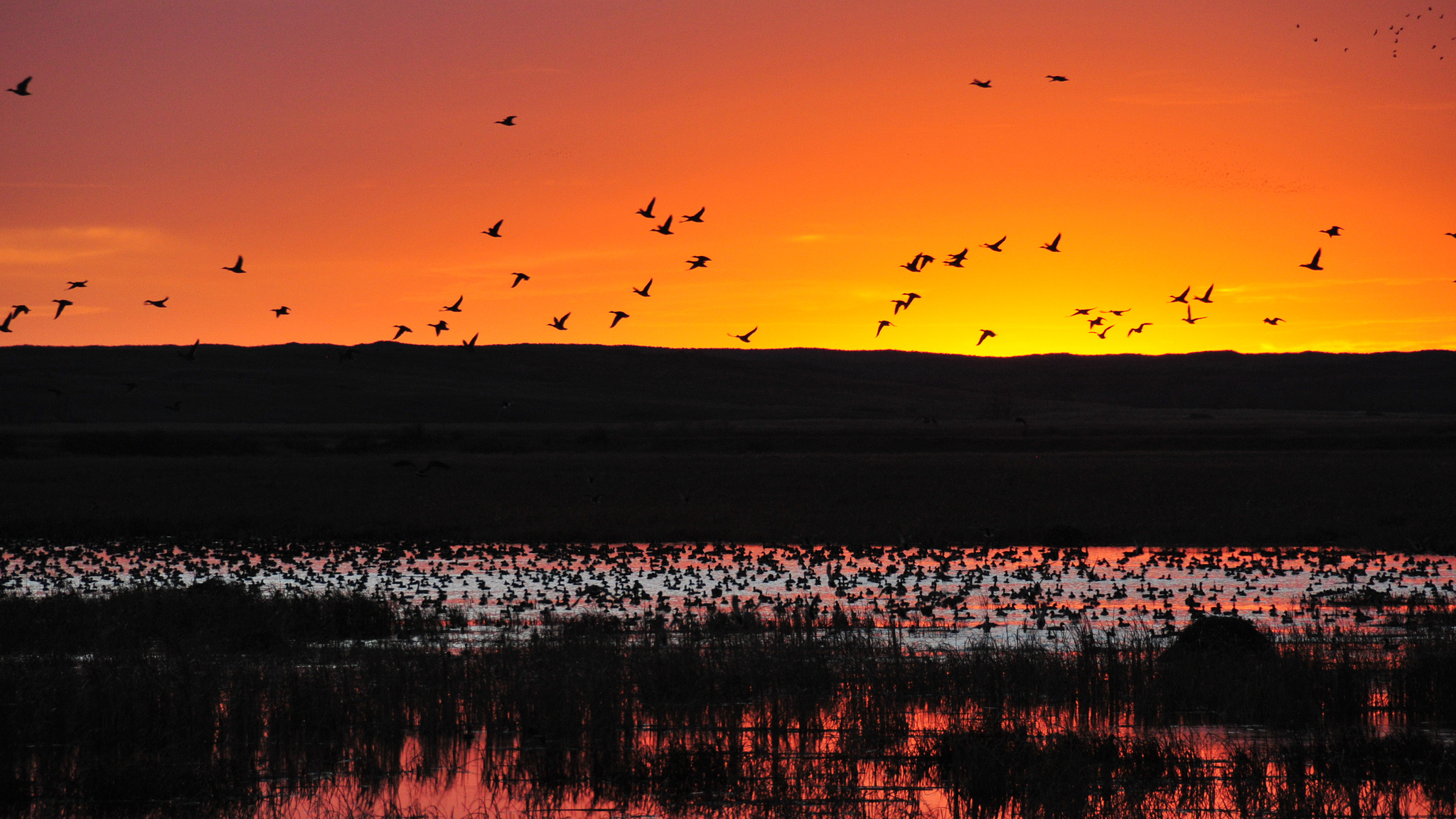
* Mention of a product name in no way implies endorsement or promotion of this product.
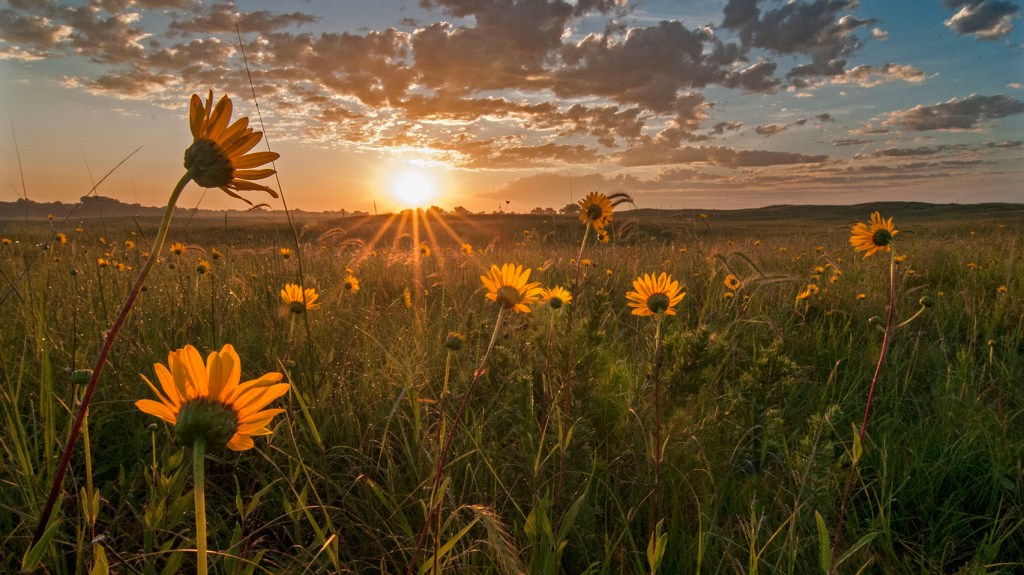



I’ve been doing prairie remnant restoration and prairie reconstruction in Iowa for almost thirty years, as a volunteer and landowner. There really is a major difference between blanket spraying of glyphosate every year on millions of acres of glyphosate-resistant rowcrops, which is a recipe for weed resistance, and careful limited use of glyphosate to paint cut woody stems and to do spot control of certain invasive Eurasian weeds.
Ted Williams is absolutely right — those of us in the trenches of prairie work, especially in the Cornbelt, really need to be able to use herbicides, in limited amounts, of course, and very carefully. Otherwise, trees and shrubs will overwhelm the small original prairies we have left here. That is not a theoretical statement. Many of those small prairies have already disappeared under woody invasion, to the point where recovery would be very difficult if not impossible. I’ve seen it.
I have never met a committed experienced prairie worker, at prairie conferences or in the field or elsewhere, who doesn’t understand the need for herbicide use. And those of us who have tried cutting without using herbicide have learned the hard way that it doesn’t work, at least not without armies of people who are able and willing to cut and/or burn every woody stem every single year. And apart from the management challenges that would present, those armies of people do not exist. There is far, far more prairie management work that needs doing in Iowa than is getting done. I’d bet the same is true elsewhere.
If anything, the situation is getting worse in many places as natural-resource funding stays the same or declines while the costs of good land management go up. I’m old enough now that I can no longer run my own prescribed fires, so I have to hire them done. Even a small several-acre burn costs several hundred dollars, and larger burns can cost a few thousand.
And the few prescribed-burn companies in my area that have good insurance, skills, and equipment have too much work. They also face the challenge of climate change. Weather patterns around here have altered in ways that make prescribed burning more difficult.
Invasive problems are also increasing. In central southern Iowa, grassland managers are so desperate that they recently started using aerial spraying to combat Asian bush honeysuckle, which is degrading large areas of grassland habitat in one of the few places in Iowa where sizeable grassland habitat still exists. Forty years ago, before I knew anything about prairies or started doing prairie work, I might have heard about that and been appalled.
Now I just hope the aerial spraying will work. I have been battling Asian bush honeysuckle on my own land for years, and I wish the well-meaning fools who brought it to North America had sunk in the oceans first. Not charitable and not fair, of course. But they unleashed an ecological plague that is still revving up.
On the brighter side, finding out about prairies transformed my life. Some of the best people I’ve ever met have been prairie fanatics who generously shared their knowledge and time. For some of us, prairies are the ultimate outdoor magic.
Anyway, I know a good prairie story when I read one, and Ted Williams has written a superb one. Thank you, Ted.
Good point about the difference between widespread application of herbicides on cropland and the limited point applications used for habitat restoration.
Related to this is the misunderstanding about genetically engineered crops. The GE crops aren’t as bad, inherently, as most detractors claim. The problem I see with them is the expansion of cropland that they’ve abetted. GE crops and the herbicides that are used with them have made crop farmers able to farm more land than they would otherwise, resulting in more loss of native grasslands, wetlands, and woodlands. (There have also been some good trends, especially no-till/minimum till farming which requires less fuel and reduces soil erosion.)
I’m seeing a similar misunderstanding about GE crops and pesticides and their effects on milkweeds and monarch butterflies. There may be direct effects on milkweeds and monarchs, but I think the problem is more indirect, in that farmers can now plant corn and soy much more densely than ever before. Farmers used to grow them in widely spaced rows, cultivating between the rows in a way that never completely eliminated milkweeds. Now there’s just no chance for milkweeds to grow in such dense stands of crops.
Hi Elan:
See my comment on Roundup above. Herbicides like Roundup are what’s left after the banning of persistent pesticides that accumulate in the environment–“hard pesticides.” Unfortunately, there’s a faction of the public that misread “Silent Spring” and want to ban all poisons in all applications. Maybe the most grotesque example is the 10-year, nearly successful effort to block the U.S. Fish and Wildlife Service, Cal. Fish and Wildlife, and the Forest Service from saving the Paiute cutthroat trout from being hybridized into extinction by alien rainbow trout. The litigants would have gladly ushered this beautiful fish into oblivion to avoid application of the short-lived, organic poison rotenone to 11 miles of Silver King Creek in Cal. at 50 parts per BILLION. (See: https://blog.nature.org/2015/08/19/recovery-the-return-of-native-fish-victims-of-bucket-biology/) Carson never opposed short-lived poisons essential for saving native ecosystems. Without poisons like Roundup the battle to save fish and wildlife, including endangered species, is often lost. You will never find a habitat restorer working in the trenches who opposes use of Roundup in all situations. That doesn’t mean we think saturating a 10,000-acre corn plantation with glyphosate (the main ingredient in Roundup) is a swell idea. Roundup can and should be used sparingly and where needed–for example, to paint the stumps of alien plants that would otherwise multiply by a factor of 30 or 40 and surge back into wildlife habitat. Or, when fire is not an option, to convert a small patch of alien grass (one’s yard, for example) to prairie.
I recently went to Wray, Colorado to view the Grater Prairie Chicken and to experience the Great Plaines. The farmers/ranchers there are working with conservationists and the once endangered bird is thriving! I talked to a rancher there and he was so proud to have a good portion of his private land given back to prairie and the “chickens”. One needs to go and experience the quiet beauty of the plaines bustling with life! It’s absolutely breathtaking!
I just learned that once there was 15 FEET of topsoil in these lands, and now we have LESS THAN TWO! This is an EMERGENCY!
PLEASE, please consider intensive exploration of Round-Up. It’s highly poisonous which can wash into our land waters and can be replaced with natural prohibitive products. Please have a gentle new time.
Very encouraging news as my favorite habitat is healthy prairie with its abundance of spring flowers and birds. My family has a small ranch in central Montana (Fergus County) most of it in CRP. I must admit my great frustration in the limitations that the local county committee has put on my wish to apply broader and more innovative management. “Mid-Contract Management” is required but is very grass/hay centric. I have to hay, mow or “lightly till” my CRP once in its contract length. I can no longer fertilize the expensive prairie mix I planted, nor increase the flowering forbs beyond 15% in established grass stands. I am willing to spend my own money to plant sage and forbs but get no credit towards mid-contract management. This guarantees that sagebrush will not re establish, nor flowering forbs, yet both are supposedly priorities of the federal government.
Nature must be preserved at any cost.Let everyone take part in it.
And this man was a pioneer in prairie restoration:http://articles.chicagotribune.com/2007-04-18/news/0704170598_1_preservation-settler-robert-wilson
Extraordinary article on our native prairie grasslands and perennial habitat Ted Williams!
Hi Ted,
Wonderfully written article. I’d love to talk with you about native bees sometime (I’m the guy in the video on the Nat Geo post) and I was very involved in the listing of the rusty-patched bumble bee. The full video, which is @19 mins can be seen at http://www.rustypatched.com/the-film.
In addition to my work with bees, I am the communications lead WWF’s Northern Great Plains program. This article is fantastic and important on so many levels. Thanks for all of your good work!
My best,
Clay Bolt
Hi Michael: First, Rich Patterson didn’t “support” use of Roundup on lawns. He merely stated what was possible. I should have made that point more clearly. In fact, where practical he favors use of fire to convert lawns to prairie patches. He, like all folks working in the trenches to save native ecosystems, DOES support use of Roundup (and other herbicides) to paint cut-off stumps of invasive trees. If you, don’t do this, you get maybe 50 sprouts where you just had one.
Without herbicides–including widespread spray applications–the battle to save native ecosystems is lost. The U.S. Fish and Wildlife Service depends on herbicides, including Roundup, to protect the native flora and fauna of National Wildlife Refuges.
For the last 40 years glyphosate, the main ingredient in Roundup, has been subjected to all manner of tests, with no damning result. The Center for Northern Woodlands Education, whose mission is “to advance a culture of forest stewardship in the Northeast and to increase understanding of and appreciation for the natural wonders, economic productivity and ecological integrity of the region’s forests,” offers this: “Researchers at Cornell, among other major universities, analyzed toxicology tests in 1996 and concluded that glyphosate is “practically nontoxic” by ingestion, and it’s unlikely that the chemical would produce reproductive, teratogenic (birth defects), mutagenic, or carcinogenic effects in humans. But because science is never 100 percent certain about anything, you can see where phrases like “practically nontoxic” leave an opening for attack. The web is awash with anti-glyphosate stories with headlines like: 50 percent of rats given this died – Why is it on your dinner plate? And, indeed, if you fed rats more than 5,600 mg/kg of the chemical they would probably die.”
Please check out some of the groups advocating use of Roundup to save native ecosystems, including endangered species. Massachusetts Audubon, for example, says this: http://www.massaudubon.org/learn/nature-wildlife/invasive-plants/herbicides
Alien invasives like bush honeysuckles, Japanese knotweed and Brazilian pepper would destroy native ecosystems were they not sprayed with Roundup and other herbicides. Pulling and cutting doesn’t work.
Jake Sigg, former president of the California Native Plant Society, whom I’ve interviewed in the past, declares: “People in Marin don’t realize the huge problem existing on Mount Tamalpais [gross infestation of Scotch and French broom that dominates hundreds of acres]. With time, this watershed will become a monoculture environment because broom, and other nonnatives, not only choke out native plants but also starve out native animal life. Thousands of insects live on native plants; birds and critters feed on those insects; and so forth on up the food chain. Glyphosate, he says, “is by far the most cost-effective way” of controlling nonnative plants.
I am continually distressed by the brainless, anti-herbicide screeds infesting the web that proclaim alien plants to be benign, even beneficial (and I am not suggesting you think like this). Here’s a typical example, a defense from an anti-herbicide zealot of America’s biggest and arguably most destructive weed: “The ‘invasive’ eucalyptus tree, for instance, was planted by the hundreds of thousands in the 1870s, as it was renowned for its grace and appearance. The tree can withstand fires and irrigates soil by absorbing moisture from fog through its leaves and funneling it through its roots, which sounds more like an environmental benefit than a threat.”
I cannot effing believe that this Nature Conservancy blog piece supports the use of Roundup. Apalling.
Hi Kay:
Judicious use of herbicides is indeed the only option to save native ecosystems in many cases. One of my missions for this piece and many others has been countering the chemophobia that is obstructing essential herbicide use in many parts of the nation. I’ll take this opportunity to add that folks who use herbicides (including TNC and Rich Patterson) do so sparingly and only as a last resort. If I’d had more space, I’d have reported that where possible Patterson prefers fire to Roundup when converting lawns to prairie patches. It doesn’t work as quickly but it usually works as well.
Chuck: Native bees don’t get much press. They sure need it. There’s even an endangered bumble bee.
http://news.nationalgeographic.com/2017/03/bumblebees-endangered-extinction-united-states/
Native bees are definitely on my query list.
Nice work. I think it would be great to also read a piece on native bees — since their identities are subsumed by our fascination with Euro-pollinators.
Excellent article packed with important information: We should not be worried about European honey bees, instead we need to concentrate on our native bees. Herbicides, used judiciously, are sometimes the only way to get rid of invasive plants in order to restore native ecosystems, and grazing is good for prairies, if done correctly. This piece is especially important for those who are not aware of the beauty and importance of North American prairies which once covered a vast expanse across the continent’s midsection.